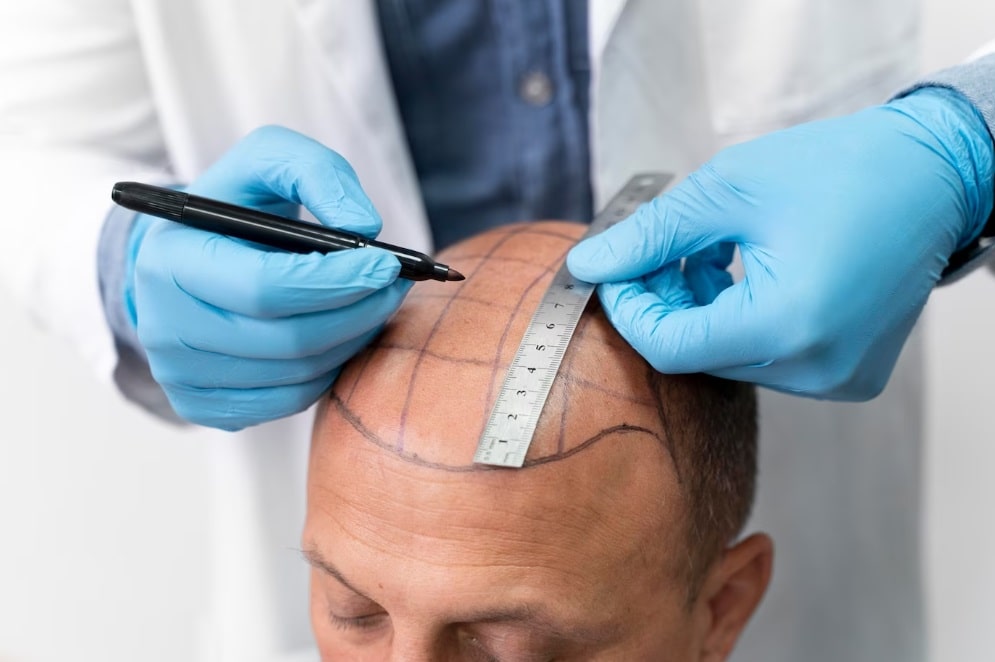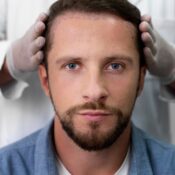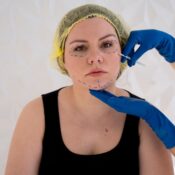
Hair Transplantation in Turkey
Hair transplantation is a popular cosmetic procedure in Turkey, with many skilled and experienced hair transplant clinics and surgeons available. Turkey has become a leading destination for hair transplantation due to the high quality of care, affordable prices, and the availability of advanced technologies.
Here are some key facts about hair transplantation in Turkey:
- Cost: Hair transplantation in Turkey is generally more affordable than in many other countries, including Europe and the United States. The cost can vary depending on the number of grafts needed, the technique used, and the experience of the surgeon, but typically ranges from $1,500 to $5,000 USD.
- Techniques: Hair transplantation in Turkey is performed using the latest techniques, including Follicular Unit Extraction (FUE) and Direct Hair Implantation (DHI). These techniques involve removing individual hair follicles from the donor area and transplanting them to the balding or thinning areas of the scalp.
- Clinics and Surgeons: Turkey has many hair transplant clinics and surgeons who are highly skilled and experienced in performing the procedure. It is important to choose a clinic and surgeon that is reputable and has a track record of success.
- Medical Tourism: Many people from around the world travel to Turkey for hair transplantation, making it a popular destination for medical tourism. Patients can combine their procedure with a relaxing holiday, as Turkey is known for its rich history, beautiful beaches, and vibrant culture.
- Aftercare: After the procedure, patients will need to follow specific aftercare instructions to ensure proper healing and optimal results. This may include avoiding certain activities or medications, keeping the scalp clean and moisturized, and avoiding sun exposure.
Overall, hair transplantation in Turkey can be a safe and effective way to restore hair growth and improve confidence. It is important to carefully research clinics and surgeons and to discuss all risks and benefits with a qualified professional before undergoing the procedure.
What is Hair Transplantation?
Hair transplantation is a surgical procedure that involves removing hair follicles from one part of the body, called the donor site, and implanting them into balding or thinning areas of the scalp, known as the recipient site. The procedure is typically performed under local anesthesia and can take several hours to complete.
There are two main techniques used in hair transplantation:
- Follicular Unit Transplantation (FUT): In this technique, a strip of skin containing hair follicles is removed from the donor site, usually at the back of the head, and the follicles are then harvested and prepared for implantation. The recipient site is then prepared, and the hair follicles are transplanted into small incisions made in the scalp.
- Follicular Unit Extraction (FUE): This technique involves removing individual hair follicles directly from the donor site using a small punch tool, and then implanting them into the recipient site using the same small incisions.
Both techniques have their advantages and disadvantages, and the specific approach used will depend on the patient’s individual needs and the recommendation of the surgeon.
Hair transplantation can be an effective way to restore hair growth in people with male or female pattern baldness, alopecia areata, or other types of hair loss. The procedure can provide a natural-looking, long-term solution to hair loss, and can improve self-confidence and quality of life for many patients.
It is important to carefully research hair transplantation and choose a qualified and experienced surgeon to ensure a safe and successful outcome. Like any surgery, there are risks associated with hair transplantation, such as bleeding, infection, and scarring. Patients should discuss all risks and benefits with their surgeon before undergoing the procedure.
How to do hair transplantation?
Hair transplantation is a surgical procedure that should only be performed by a qualified and experienced surgeon. Here are the general steps involved in a hair transplantation procedure:
- Consultation: The first step is to consult with a hair transplant surgeon to discuss your individual needs and determine if you are a good candidate for the procedure. The surgeon will evaluate your scalp, hair loss pattern, and overall health to determine if hair transplantation is the best option for you.
- Donor Site Preparation: The surgeon will identify a suitable donor site, typically at the back of the head where hair is more resistant to balding. For FUT, a strip of skin is removed from the donor site, while for FUE, individual hair follicles are extracted.
- Follicle Preparation: The harvested hair follicles are then carefully prepared and sorted under a microscope to ensure they are healthy and viable for transplantation.
- Recipient Site Preparation: The surgeon will prepare the recipient site by creating tiny incisions in the balding or thinning area of the scalp.
- Implantation: The surgeon will then carefully implant the prepared hair follicles into the recipient site, ensuring that they are placed at the correct angle and orientation to ensure a natural-looking result.
- Aftercare: After the procedure, the patient will be given specific instructions on how to care for the scalp and hair. This may include avoiding certain activities or medications, keeping the scalp clean and moisturized, and avoiding sun exposure.
- Follow-Up: The patient will need to return to the surgeon for follow-up appointments to monitor the progress of the hair transplantation and ensure that the scalp is healing properly.
Hair transplantation can take several hours to complete, and patients may need multiple sessions to achieve their desired results. It is important to carefully research hair transplantation and choose a qualified and experienced surgeon to ensure a safe and successful outcome.
What are Hair Transplant Methods?
There are two main methods for hair transplantation: Follicular Unit Transplantation (FUT) and Follicular Unit Extraction (FUE).
- Follicular Unit Transplantation (FUT): This method involves the removal of a strip of skin with hair from the back or sides of the head (donor area) under local anesthesia. This strip is then divided into individual hair follicular units under a microscope, and then transplanted into the balding areas of the scalp (recipient area) where hair is needed. This technique is also known as strip harvesting.
- Follicular Unit Extraction (FUE): This method involves the removal of individual hair follicles from the donor area using a small punch tool, without the need for removing a strip of skin. The harvested hair follicles are then implanted into the balding areas of the scalp using tiny incisions. This method is less invasive and leaves minimal scarring compared to FUT.
Both methods can be effective in restoring hair growth and are chosen based on the patient’s individual needs, hair type, and other factors. The surgeon will evaluate the patient’s hair and scalp condition and recommend the best technique for their specific situation.
In addition to these two main methods, there are also variations of FUE such as Robotic Hair Transplantation and Direct Hair Implantation (DHI), which use specialized tools and techniques to improve the accuracy and speed of the procedure. However, these methods may not be suitable for all patients and should be discussed with a qualified hair transplant surgeon.
Before Hair Transplant
Before undergoing a hair transplant procedure, there are several things that patients should do to prepare:
- Consultation: The first step is to schedule a consultation with a qualified hair transplant surgeon. During the consultation, the surgeon will evaluate the patient’s hair loss pattern, scalp condition, and overall health to determine if they are a good candidate for the procedure. The surgeon will also discuss the expected results, potential risks and complications, and the cost of the procedure.
- Medications: Patients should inform their surgeon about any medications they are taking, including over-the-counter medications, herbal supplements, and prescription drugs. Some medications, such as blood thinners, may need to be temporarily discontinued prior to the procedure.
- Alcohol and Smoking: Patients should avoid drinking alcohol and smoking cigarettes for at least a week before the procedure, as these can affect the body’s ability to heal and increase the risk of complications.
- Hair Length: Patients should avoid cutting their hair short before the procedure, as longer hair can help to conceal the transplant site during the healing process.
- Health: Patients should ensure that they are in good health before the procedure, with no underlying medical conditions that may affect the healing process. They should also get plenty of rest, eat a healthy diet, and avoid strenuous activities in the days leading up to the procedure.
By following these guidelines, patients can help to ensure a successful and safe hair transplant procedure with optimal results.
After Hair Transplant
After a hair transplant procedure, patients need to take proper care of their scalp to ensure optimal healing and hair growth. Here are some general guidelines for aftercare:
- Medications: The surgeon may prescribe medications such as painkillers, antibiotics, and anti-inflammatory drugs to help manage pain, prevent infection, and reduce swelling. Patients should follow the instructions for taking these medications carefully.
- Rest: Patients should rest for the first few days after the procedure and avoid strenuous activities that can increase blood flow to the scalp and affect the healing process.
- Hair washing: Patients can usually start washing their hair gently with a mild shampoo 24-48 hours after the procedure. They should use lukewarm water and avoid rubbing the scalp vigorously.
- Protecting the scalp: Patients should avoid direct sunlight, wearing hats, or any other activity that may cause friction or pressure on the scalp for the first few weeks after the procedure.
- Follow-up appointments: Patients will need to attend follow-up appointments with the surgeon to monitor the healing process and ensure that the transplanted hair is growing properly.
It’s important to note that the healing process can vary from person to person, and patients should always follow the specific aftercare instructions provided by their surgeon. By following these guidelines, patients can help to ensure a successful hair transplant procedure with natural-looking results.






